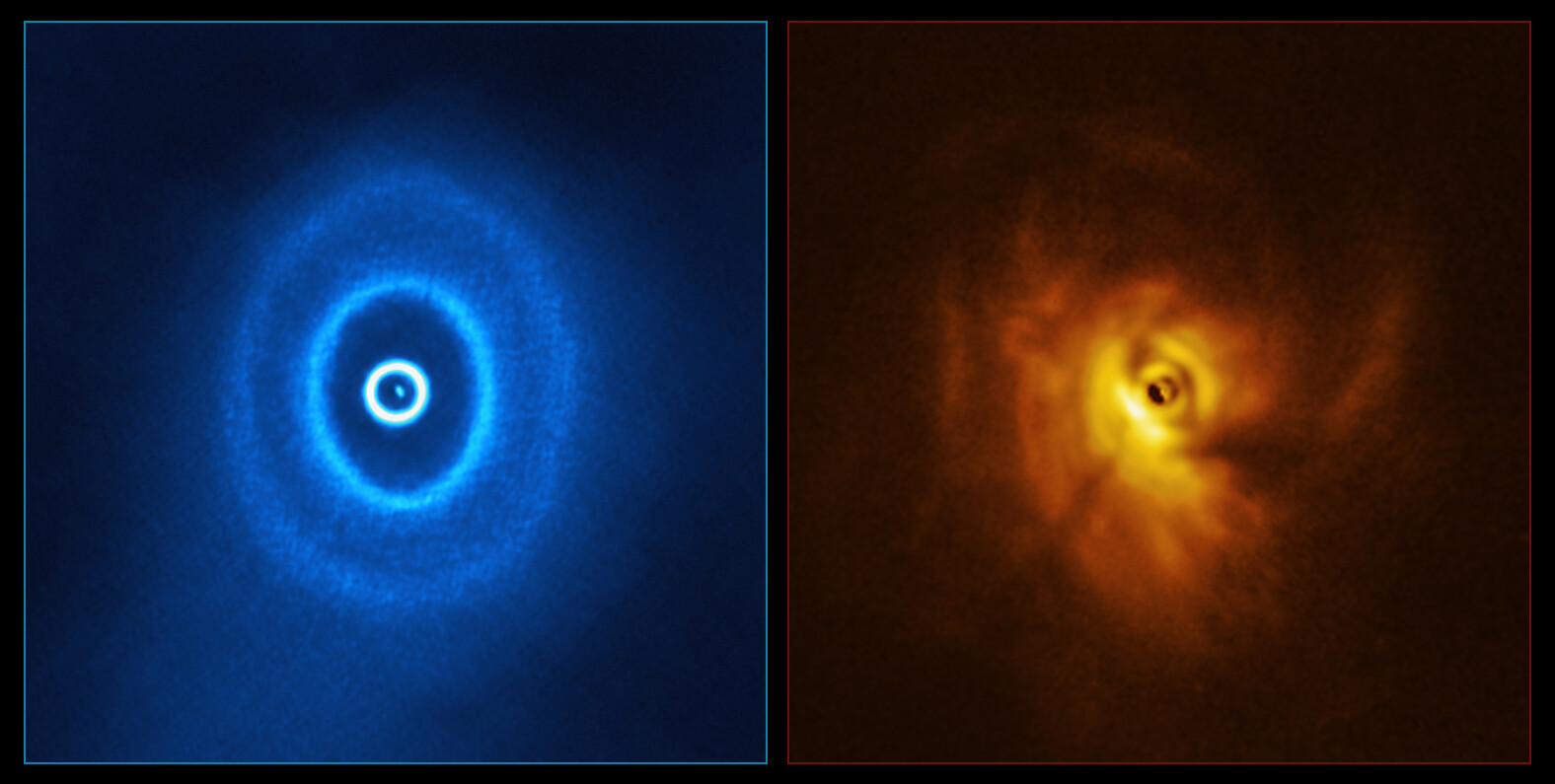Deformed disk around the triple star system GW Orionis
Our Solar System is remarkably flat, because all the planets orbit in the same plane. But that’s not always the case, especially not for planet-forming disks around systems made up of multiple stars. GW Orionis, for example, which is located more than 1300 light-years away in the constellation Orion, has three stars and a deformed, broken-apart disk surrounding these stars.
“Our images show an extreme case where the disk is not flat at all, but is deformed and has a slanted ring that has detached from the disk,” says Stefan Kraus, professor for astrophysics at the University of Exeter, who led a study published in the journal Science. The oblique ring is located in the inner part of the disk close to the three stars.
The new study shows that this inner ring contains 30 Earth masses of dust, which might be enough to form planets. “All planets formed within the inclined ring will orbit the star on very oblique orbits. We predict that many planets on oblique, widely separated orbits will be detected in future observation campaigns, for example, with the ELT,” says team member Alexander Kreplin of the University of Exeter. Since more than half of the stars in the sky are born with one or more companions, this produces an exciting prospect: there might be an unknown population of exoplanets that orbit their stars on highly inclined and widely separated orbits.
To come to these conclusions, the team observed GW Orionis for more than 11 years. To study the gravitational dance of the three stars in the system and map their orbits, starting in 2008 they used the instrument AMBER and later GRAVITY on the ESO’s VLT interferometer in Chile, which combines the light from different VLT telescopes. “We determined that the three stars do not orbit in the same plane, but their orbits are offset with each other and with the disk,” says Alison Young of the Universities of Exeter and Leicester and a member of the team.
They also observed the system with the instrument SPHERE on the ESO’s VLT and with ALMA, which the ESO is also involved with, and were able to image the inner ring and confirm its misalignment. Using the ESO’s SPHERE instrument, they could also see, for the first time, the shadow that this ring projects onto the rest of the disk. This helped them to determine the 3D shape of the ring and the entire disk.
The international team, which includes researchers from the United Kingdom, Belgium, Chile, France, and the USA, then combined their detailed observations with computer simulations to understand what had happened to the system. For the first time, they could clearly connect the observed displacements to the theoretical “disk-tearing effect,” which suggests that the conflicting forces of attraction from stars in different planes can deform and tear apart their planetary disks.
The simulations showed that the misalignment in the orbits of the three stars had the effect that the disk around the three stars was torn apart into different rings. The observed shape of the inner ring also matched predictions from numerical simulations on how the disk would be torn apart.


